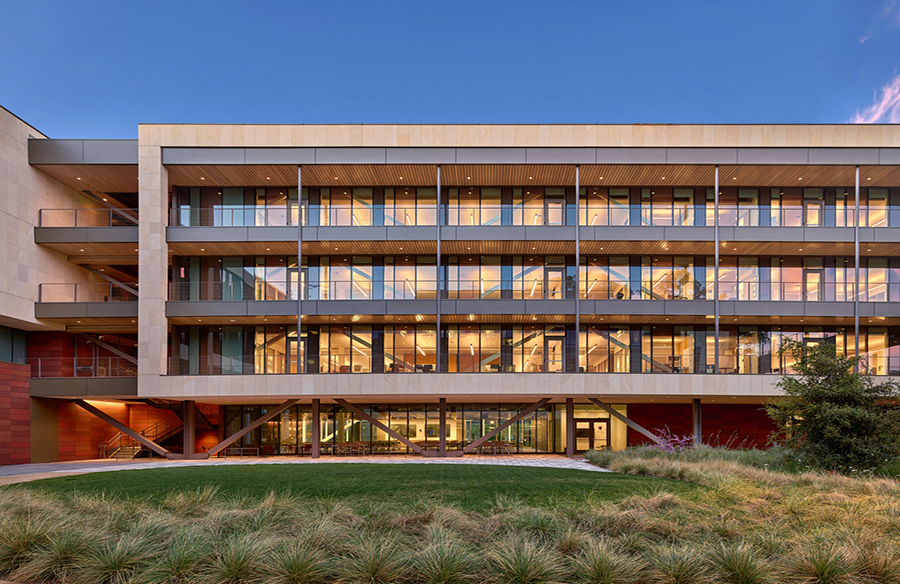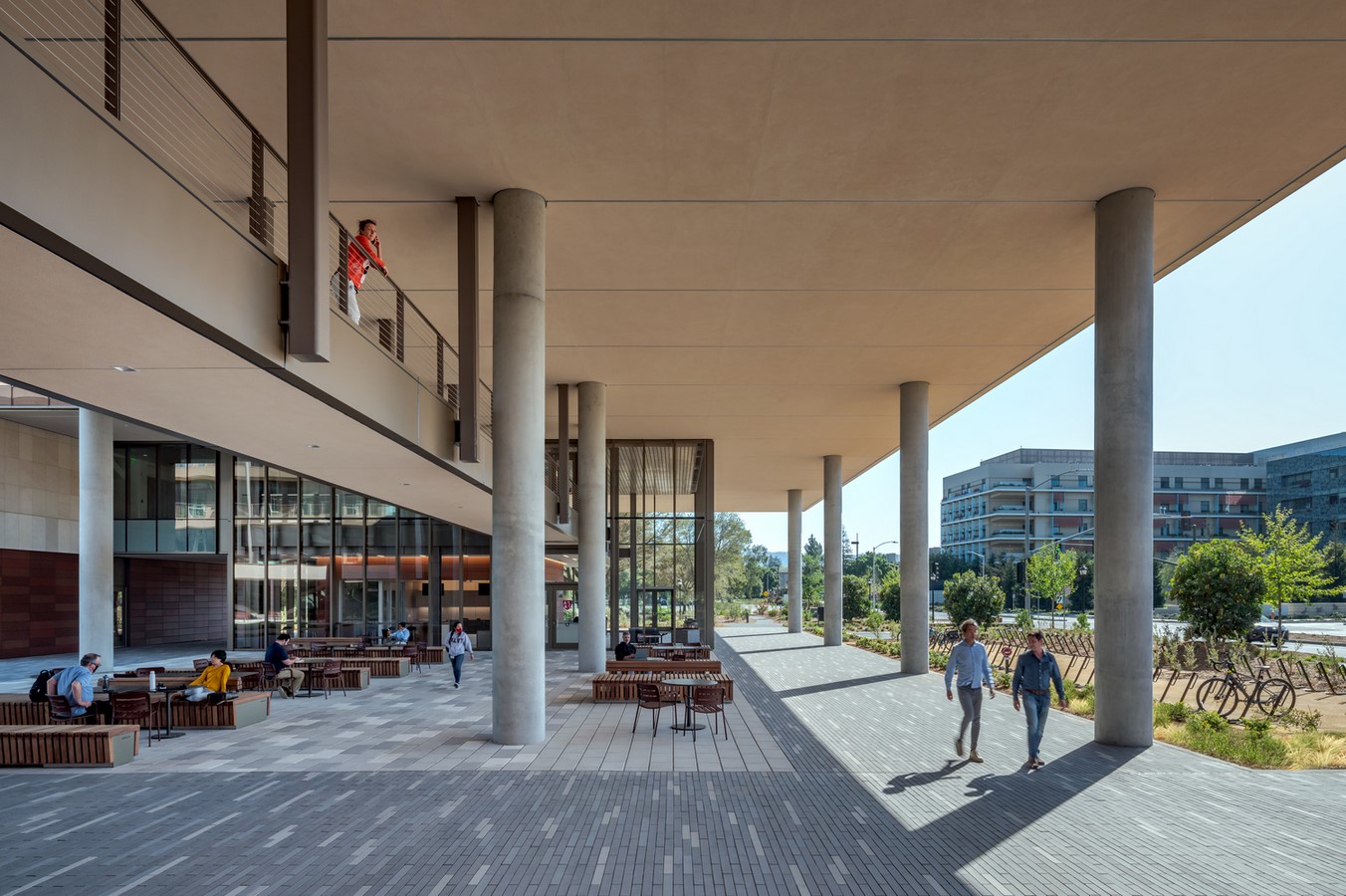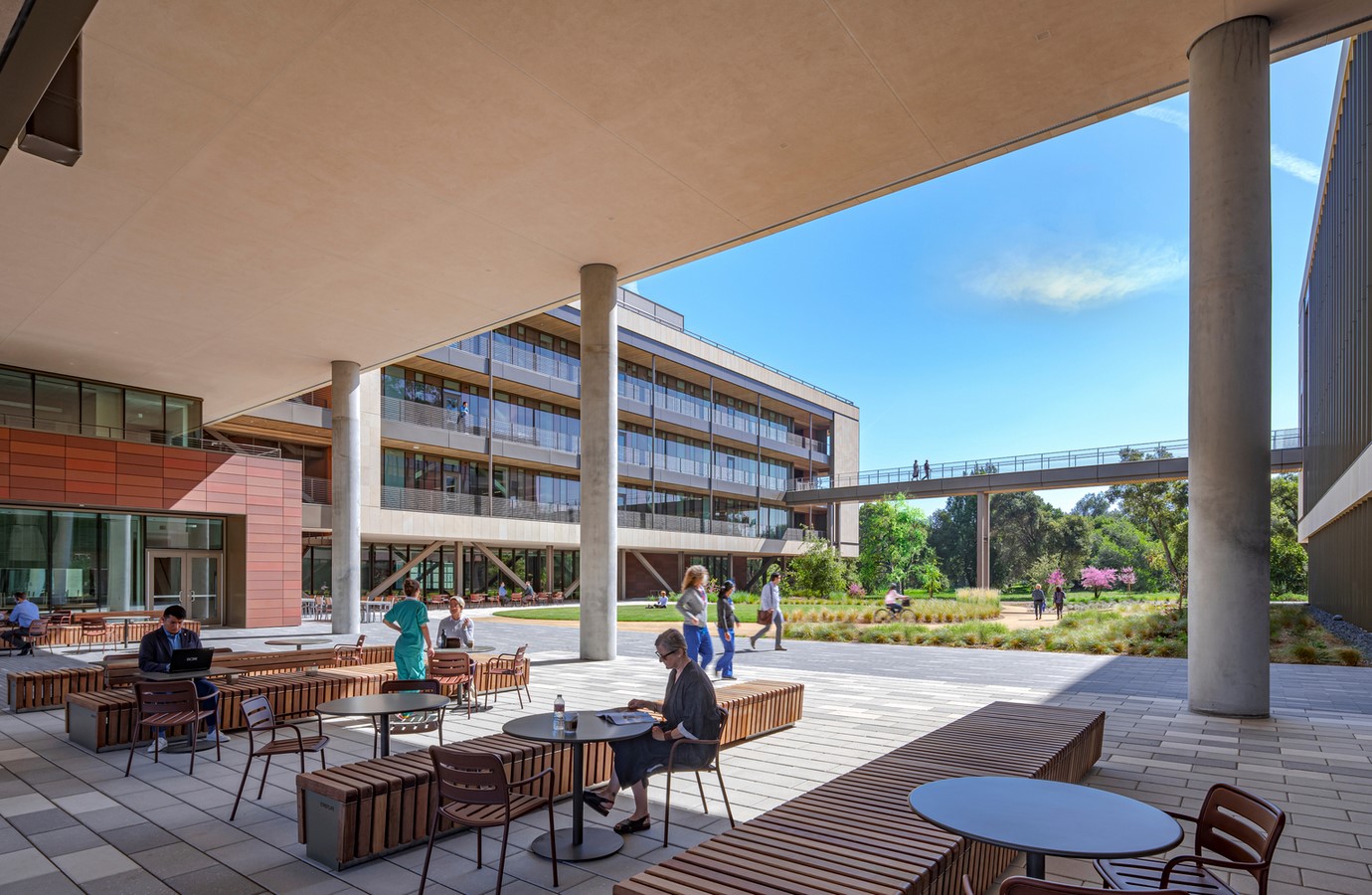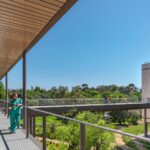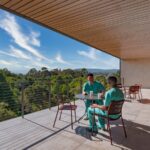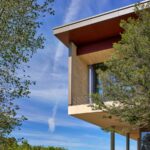Introduction
HOK undertook the design of the Stanford Center for Academic Medicine, aiming to provide a sanctuary for the dedicated medical staff while facilitating academic and research pursuits. This innovative facility encompasses a range of amenities to support the well-being and productivity of its occupants.

Integration with Surroundings
Situated at the threshold between the Stanford Medicine academic and clinical campus and the picturesque Frederick Law Olmsted-designed arboretum, the building’s massing establishes a seamless connection with its surroundings. Narrow office wings rise above a landscaped courtyard, offering panoramic views of nature from every angle.
Embracing the Outdoors
The design capitalizes on Northern California’s mild climate by extending 20 percent of the program beyond the building’s confines. Various outdoor spaces, including porches, balconies, and sky bridges, encourage socialization and collaborative work amidst natural elements. Upper terraces provide an immersive experience akin to being amidst the trees.
Passive Design Principles
Adopting a passive-first design approach, the Center maximizes the site’s potential, harnessing natural elements such as sunlight, wind, and the local ecosystem. Narrow building wings and floor-to-ceiling windows optimize natural light and panoramic views, fostering a harmonious connection with the arboretum.
Sustainable Features
The building incorporates sustainable features such as ceramic frit patterns on the curtain wall and three-story metal louvers on the west facade to minimize glare and enhance indoor thermal comfort. With an annual energy use intensity representing an 85% reduction from baseline, the Center demonstrates a commitment to environmental stewardship.
Biophilic Design Elements
Inspired by the coastal live oak tree, the Center embodies biophilic design principles, creating a multifaceted environment within its confines. Just as the native Californian tree provides shade and cool air, the Center offers a sanctuary where occupants can thrive amidst natural elements, promoting well-being and productivity.
Conclusion
The Stanford Center for Academic Medicine stands as a testament to HOK’s innovative approach to architectural design. By seamlessly blending functionality, sustainability, and biophilic principles, the Center provides a nurturing environment where medical professionals can thrive in their academic and clinical endeavors while reconnecting with nature.
